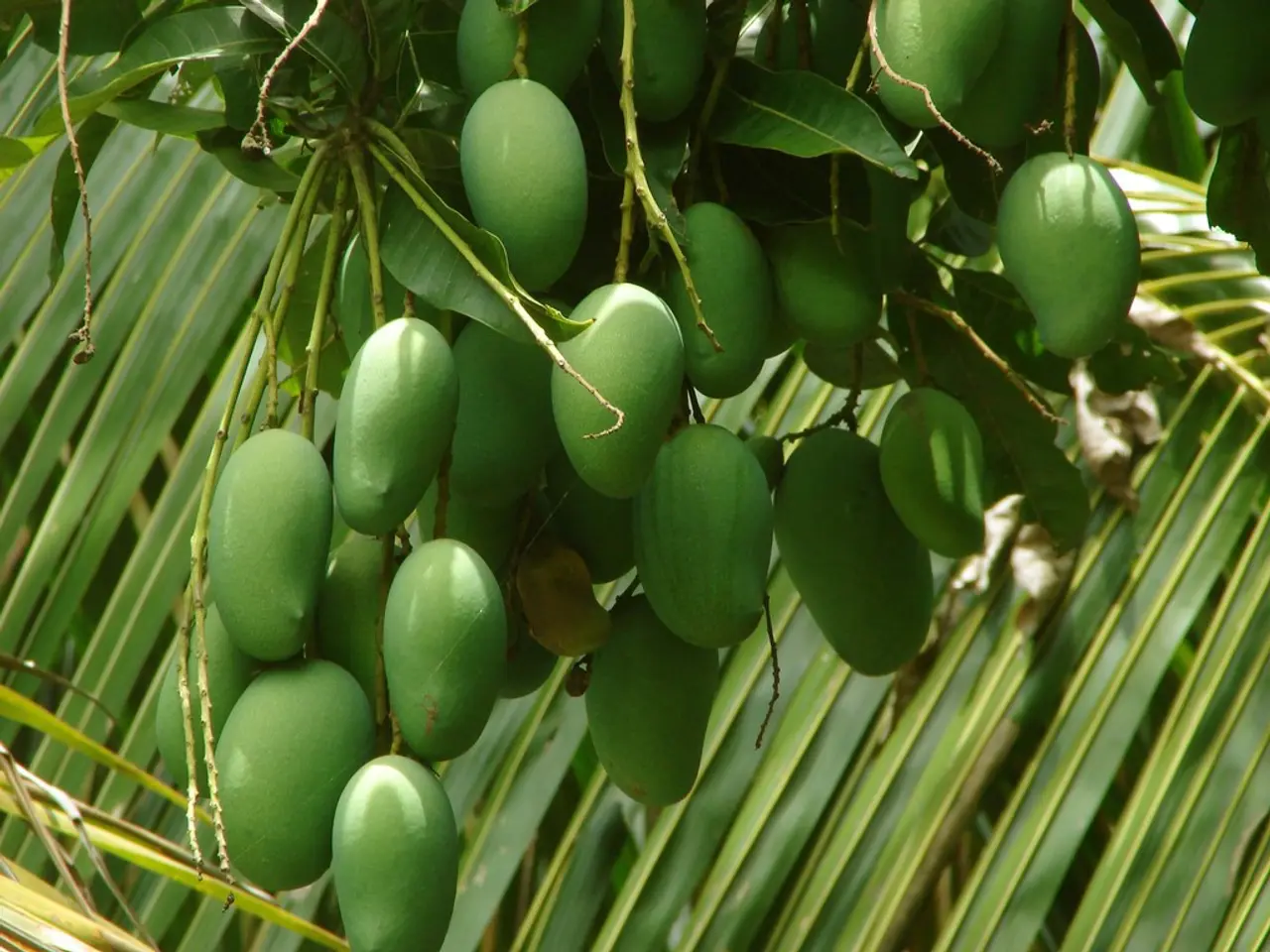Methods for Successfully Managing Fruit Flies in Mango Orchards
Effective Fruit Fly Control in Mango Farming: An Integrated Approach
Mango farmers have a range of options to control fruit flies, ensuring a healthier and more productive crop. The key lies in an integrated approach that combines physical barriers, cultural practices, organic and biological controls, and selective chemical methods.
Physical Barriers and Traps
Pheromone traps and protein bait stations play a crucial role in this approach. Pheromone traps lure male fruit flies, reducing mating populations, while M3™ bait stations attract and kill females using protein hydrolysate combined with an insecticide.
Cultural Practices
Orchard cleanliness, removing fallen and infested fruits, crop rotation, and regular monitoring of pest levels are essential cultural practices for fruit fly suppression. These measures reduce breeding sites and overall pest pressure.
Organic and Biological Controls
Organic solutions such as Neem oil can stop fruit flies and prevent egg-laying. Biological controls include the use of nematodes, applied to the soil, which attack fruit fly pupae, interrupting the fly lifecycle before adults emerge. Parasitoid wasps like Fopius arisanus lay eggs inside fruit fly hatchlings, reducing the fly population. Predatory birds such as chickens, guineafowl, or bug-eating birds can also help control fruit fly larvae on the ground.
Eco-friendly biopesticides like Novobac’s BT insecticide help control caterpillars and fruit flies, supporting sustainable mango production with minimal environmental impact.
Chemical Control
Chemical control is employed judiciously, often in combination with monitoring and trap-based methods. The male annihilation technique (MAT) uses a fibre block impregnated with methyl eugenol and a toxicant to kill male fruit flies. Selective insecticides may also be used as bait in stations targeting females, minimizing broad pesticide application.
Low-toxicity insecticides like spinosad are effective against fruit flies and safer for other beneficial bugs. However, they should be used if all else fails to prevent pesticide checks.
In summary, effective fruit fly control in mango farming integrates:
- Physical barriers/traps (pheromone traps, bait stations)
- Cultural practices (orchard sanitation, crop rotation, monitoring)
- Biological controls (Bti-based biopesticides, nematodes, parasitoid wasps, predatory birds)
- Targeted chemical methods (male annihilation technique and bait stations)
This integrated pest management approach balances efficacy with sustainability, reduces chemical residues, and promotes orchard health and productivity.
A privately constructed spray using garlic and stew can also serve as a natural enemy for fruit flies and can be applied to trees.
With careful planning and an integrated pest management approach, farmers can keep fruit fly populations under control, ensuring healthier and more productive mango seasons. This comprehensive guide equips mango farmers with effective strategies to control fruit flies while preserving the quality of their harvest.
In this integrated pest management approach for mango farming, the lifestyle of the orchard incorporates organic and biological controls, such as using Neem oil, nematodes, parasitoid wasps, predatory birds, and a homemade garlic spray, to minimize chemical usage and promote a healthier environment.
Moreover, maintaining a food-and-drink-safe ecosystem in the home-and-garden setting of the farm, gardeners can also create a DIY garlic spray as a natural solution to combat fruit fly infestations, contributing to a more sustainable and productive mango-growing season.





